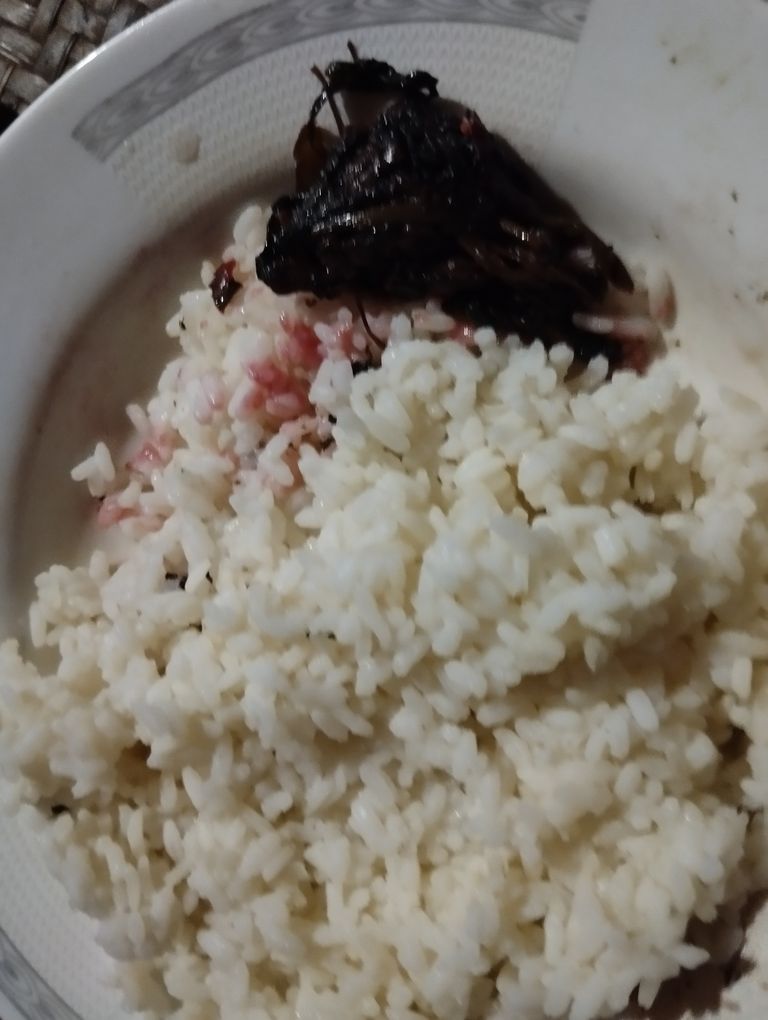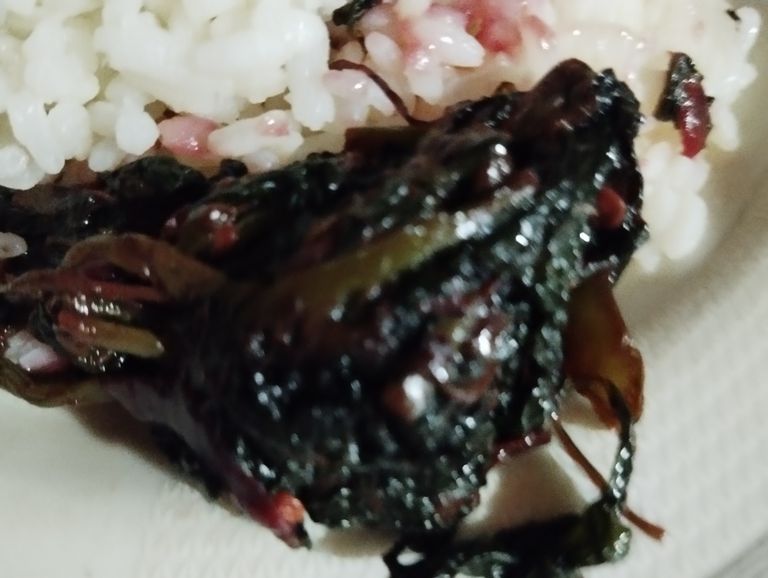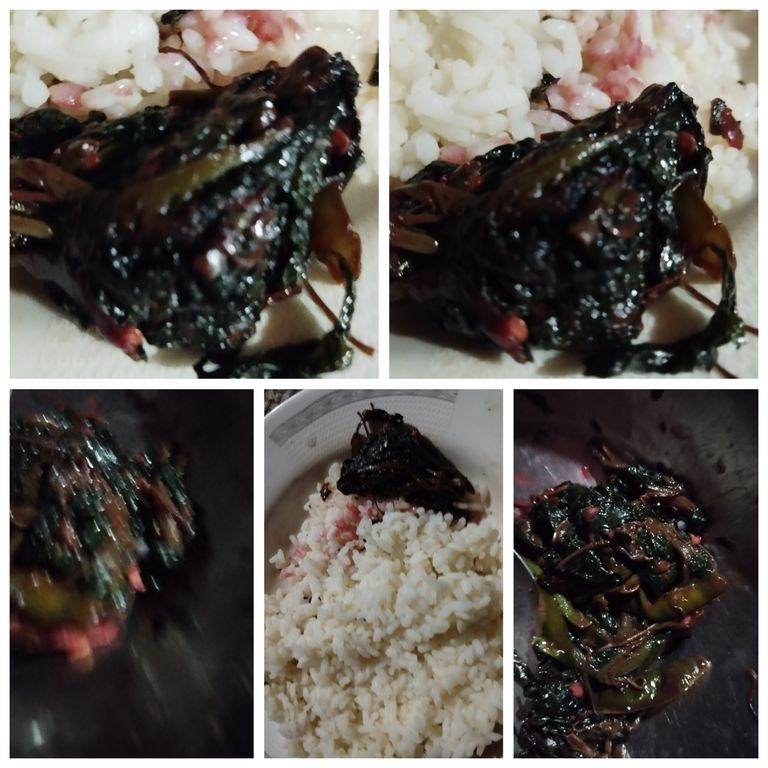
Health Benefits of Consuming Red Spinach.
Red spinach, also known as Amaranthus gangeticus, is a nutrient-rich leafy vegetable commonly found in many parts of Asia, including Bangladesh and India. This vibrant red leafy vegetable is highly valued not only for its delicious taste but also for its numerous health benefits. In this article, we will explore the nutritional composition of red spinach and delve into the various health advantages it offers when incorporated into our daily diet.
Nutritional Profile of Red Spinach
Red spinach is a powerhouse of essential nutrients, packed with vitamins, minerals, antioxidants, and phytonutrients. Here’s a breakdown of the nutritional components found in red spinach:
Vitamins: Red spinach is rich in vitamins A, C, E, and K. Vitamin A is crucial for maintaining healthy vision, skin, and immune function, while vitamin C is a potent antioxidant that helps protect the body from oxidative stress and boosts immunity. Vitamin E promotes skin health, and vitamin K plays a vital role in blood clotting and bone health.
Minerals: It contains important minerals like calcium, iron, potassium, and magnesium. These minerals are essential for maintaining healthy bones, regulating blood pressure, and supporting muscle function.
Antioxidants: Red spinach is a rich source of antioxidants like flavonoids, beta-carotene, and lutein, which help combat free radicals in the body and reduce the risk of chronic diseases.
Dietary Fiber: The high fiber content in red spinach aids digestion, supports gut health, and promotes regular bowel movements, making it an excellent choice for those looking to improve their digestive health.
Protein: While leafy greens are generally low in protein, red spinach offers a good amount of plant-based protein, which is beneficial for vegetarians and vegans looking for alternative protein sources.
Now, let’s explore the specific health benefits of consuming red spinach:
- Rich Source of Iron – Helps Prevent Anemia
One of the key benefits of red spinach is its high iron content. Iron is an essential mineral that plays a vital role in the production of hemoglobin, which carries oxygen in the blood. Consuming iron-rich foods like red spinach helps prevent iron deficiency anemia, a condition characterized by fatigue, weakness, and decreased immune function. This makes red spinach particularly beneficial for women, who are more prone to iron deficiency due to menstruation.
- Boosts Immunity
Red spinach is an excellent source of vitamin C, a powerful antioxidant that strengthens the immune system. Regular consumption of vitamin C-rich foods enhances the body’s ability to fight off infections and recover from illnesses. Additionally, the combination of other vitamins and antioxidants in red spinach contributes to overall immune health, protecting the body from common ailments like colds and flu.
- Promotes Heart Health
The high potassium content in red spinach helps regulate blood pressure by counteracting the effects of sodium in the body. Potassium acts as a vasodilator, relaxing blood vessels and reducing the strain on the heart. This helps lower the risk of hypertension (high blood pressure), which is a major risk factor for heart disease. Moreover, the antioxidants found in red spinach, such as flavonoids and beta-carotene, help reduce inflammation and prevent the oxidation of cholesterol, further supporting heart health.
- Improves Digestive Health
Red spinach is a great source of dietary fiber, which is essential for maintaining a healthy digestive system. Fiber adds bulk to the stool, making it easier to pass and preventing constipation. Additionally, fiber promotes the growth of healthy gut bacteria, which plays a crucial role in overall digestive health and immune function. Including red spinach in your diet can help prevent digestive issues such as constipation, bloating, and irritable bowel syndrome (IBS).
- Supports Eye Health
Red spinach is packed with beta-carotene and lutein, both of which are essential for maintaining healthy vision. Beta-carotene is converted into vitamin A in the body, which helps protect the cornea and prevent night blindness. Lutein, on the other hand, is a powerful antioxidant that helps filter harmful blue light and protects the eyes from age-related macular degeneration (AMD), a leading cause of vision loss in older adults.
- Aids in Weight Loss
For those looking to shed some extra pounds, red spinach is an excellent addition to a weight loss diet. It is low in calories but rich in nutrients, making it a perfect food for those on a calorie-restricted diet. The high fiber content in red spinach helps you feel full for longer periods, reducing the likelihood of overeating and snacking between meals. Additionally, red spinach provides essential nutrients without adding excess calories, making it an ideal food for maintaining a healthy weight.
- Improves Skin Health
The abundance of antioxidants, vitamins, and minerals in red spinach makes it highly beneficial for skin health. Vitamin C plays a crucial role in the production of collagen, a protein that gives the skin its structure and elasticity. Regular consumption of red spinach can help improve skin texture, reduce the appearance of wrinkles, and promote a youthful complexion. Additionally, the antioxidants in red spinach help protect the skin from damage caused by UV rays and environmental pollutants, preventing premature aging.
- Enhances Bone Health
Red spinach is a good source of calcium and vitamin K, both of which are essential for maintaining strong and healthy bones. Calcium is a major component of bones and teeth, while vitamin K helps regulate bone mineralization and prevent bone loss. Regular consumption of red spinach can help prevent osteoporosis, a condition characterized by weak and brittle bones, especially in older adults.
- Detoxifies the Body
The high fiber content in red spinach helps cleanse the digestive system by promoting regular bowel movements and removing waste and toxins from the body. Additionally, the antioxidants in red spinach support liver function by neutralizing harmful toxins and free radicals, helping to detoxify the body naturally. Incorporating red spinach into your diet can aid in the elimination of toxins, improve overall health, and promote a feeling of well-being.
- Supports Healthy Hair
The nutrients found in red spinach, particularly iron, vitamin C, and vitamin A, play a significant role in promoting healthy hair growth. Iron deficiency is a common cause of hair loss, and consuming iron-rich foods like red spinach can help prevent hair thinning and breakage. Vitamin A helps produce sebum, an oily substance that moisturizes the scalp and keeps hair healthy. Additionally, the antioxidants in red spinach protect hair follicles from damage caused by oxidative stress, leading to stronger and healthier hair.
How to Include Red Spinach in Your Diet
Red spinach is a versatile leafy green that can be easily incorporated into a variety of dishes. Here are a few ways to enjoy the health benefits of red spinach:
Salads: Add fresh red spinach leaves to salads for a nutrient boost and a pop of color.
Stir-fries: Sauté red spinach with garlic, onions, and your favorite vegetables for a quick and healthy side dish.
Smoothies: Blend red spinach with fruits like bananas, berries, and a splash of almond milk for a nutritious and refreshing smoothie.
Soups and Stews: Red spinach can be added to soups and stews for extra flavor, texture, and nutrition.
Curries: In many South Asian cuisines, red spinach is commonly used in curries. You can cook it with lentils, spices, and coconut milk for a delicious and wholesome meal.
Conclusion
Incorporating red spinach into your daily diet offers a multitude of health benefits, ranging from improving digestive health and boosting immunity to supporting heart and eye health. Its rich nutritional profile makes it an excellent addition to any meal, providing essential vitamins, minerals, and antioxidants that promote overall well-being. Whether you’re looking to enhance your skin, support your bones, or improve your digestive system, red spinach is a nutrient-dense superfood that deserves a regular spot in your diet.
By adding red spinach to your meals, you’re not only enjoying a delicious and versatile vegetable but also taking a significant step toward better health.

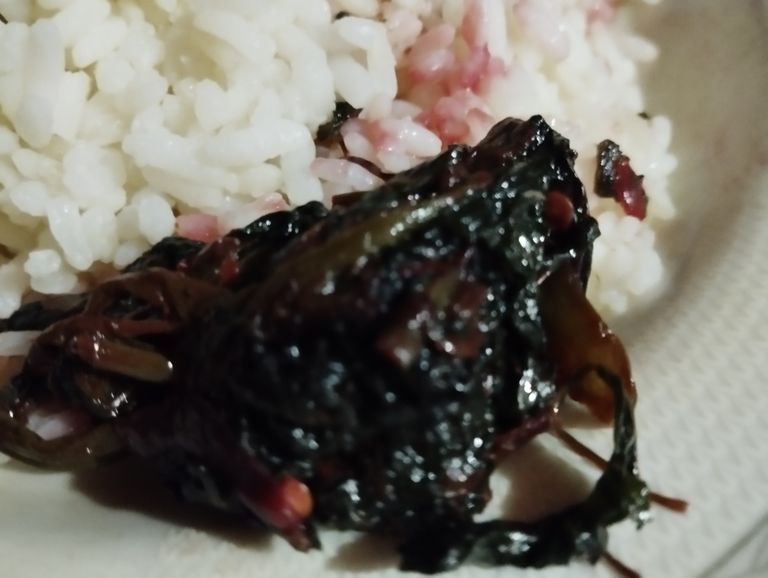
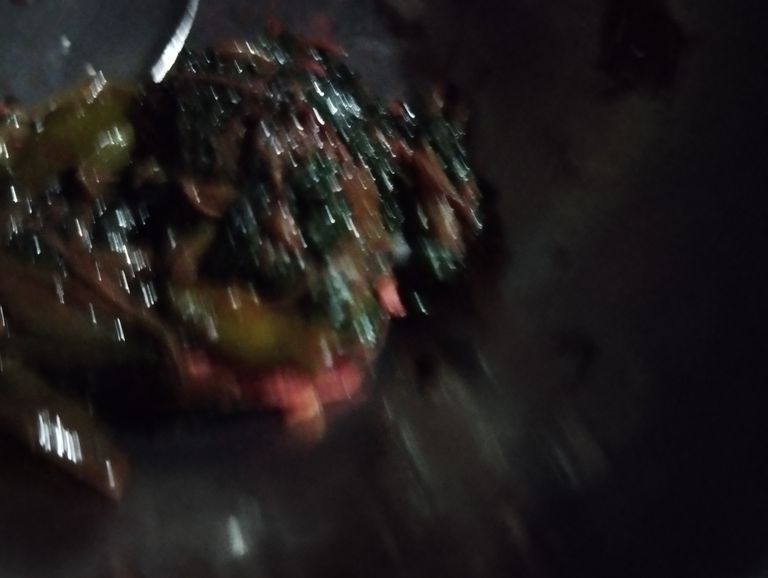
Red Spinach Cultivation Method (Lalshak)
Introduction
Red spinach, commonly known as "Lalshak" in Bangladesh, is a nutritious leafy vegetable with vibrant red leaves. Rich in vitamins, minerals, and antioxidants, it’s a popular choice in Bengali cuisine. This crop is relatively easy to grow and can be cultivated throughout the year, especially in tropical and subtropical climates. Here’s a detailed guide on how to successfully cultivate red spinach.
Step-by-Step Guide to Cultivating Red Spinach
- Suitable Climate and Soil
Red spinach thrives in warm climates, ideally between 20°C and 30°C. However, it can tolerate slight variations. In tropical regions, red spinach can be grown year-round.
Soil Requirements:
It prefers well-drained loamy or sandy loam soils with high organic matter content.
The ideal pH for red spinach is between 6.0 and 7.5.
Ensure that the soil is not waterlogged as spinach roots don’t tolerate standing water well.
- Land Preparation
Preparing the soil correctly is essential for a good harvest.
Plowing:
Plow the land 2-3 times to break up the soil and make it loose. Well-aerated soil helps in better root growth and nutrient uptake.
Fertilization:
Before planting, mix compost or well-decomposed cow dung into the soil at the rate of about 10 tons per hectare. You can also apply nitrogen-rich fertilizers like urea to boost leaf production.
Irrigation Setup:
Ensure there is a proper irrigation system in place. Raised beds or furrows can be used to facilitate better water management.
- Seed Selection and Sowing
Choosing Seeds:
Always select high-quality, disease-free seeds from a reliable source. There are several varieties of red spinach available, but it’s best to choose a locally adapted variety for better results.
Seed Treatment:
To prevent seed-borne diseases, treat the seeds with fungicides (like carbendazim) before sowing.
Sowing Method:
Seeds can be sown directly in the soil or in seedbeds for later transplantation.
Sow the seeds thinly in rows, maintaining a distance of about 15-20 cm between each row.
Cover the seeds lightly with soil (about 1 cm deep).
Spacing:
The spacing between plants should be about 5-7 cm to allow proper growth and aeration.
Germination Time:
Seeds usually germinate within 5-7 days under ideal conditions.
- Watering and Irrigation
Red spinach requires consistent moisture to thrive, but overwatering should be avoided.
Irrigation Frequency:
Water the plants lightly right after sowing.
Once the seedlings emerge, water the plants regularly, but ensure the soil doesn’t remain soggy.
Irrigate 2-3 times a week, depending on the weather conditions. During the hot summer months, increase the watering frequency.
Avoiding Water Stress:
Inadequate water can lead to stunted growth, while too much water can cause root rot and fungal infections.
- Weeding and Thinning
Weeding:
Regular weeding is necessary to reduce competition for nutrients and water. Hand-weeding is the best option for small-scale cultivation.
Thinning:
Once the plants have grown a few leaves, thin them out to maintain the desired spacing of about 7-10 cm between plants. This allows better air circulation and prevents overcrowding.
- Fertilization
Organic Fertilizer:
Apply organic fertilizers like compost or cow manure during the land preparation stage.
Inorganic Fertilizers:
To promote healthy leaf growth, apply urea at a rate of 50-70 kg per hectare. You can also use a balanced fertilizer mix containing nitrogen, phosphorus, and potassium (NPK 20-20-20).
Fertilization Timing:
Apply fertilizers after the first thinning.
A second application of nitrogen-based fertilizer can be made after 20-25 days of sowing to boost leaf production.
- Pest and Disease Management
While red spinach is generally resistant to many pests, it can still suffer from certain diseases and pests.
Common Pests:
Aphids, caterpillars, and leaf miners are the most common pests. These can be controlled using organic pesticides like neem oil or through biological control methods.
Diseases:
Red spinach is prone to fungal diseases like downy mildew and leaf spot, which thrive in humid conditions.
To prevent these, avoid overhead irrigation and ensure good air circulation around the plants.
If necessary, apply appropriate fungicides following the recommended dosages.
- Harvesting
Red spinach grows quickly and is ready for harvest within 30-40 days of sowing, depending on the variety and growing conditions.
Harvesting Method:
You can start harvesting once the plants are about 15-20 cm tall.
Harvest the outer leaves first, allowing the inner leaves to continue growing for subsequent harvests.
Alternatively, the whole plant can be pulled up when fully mature.
Yield:
A well-managed red spinach crop can yield about 8-10 tons per hectare.
- Post-Harvest Handling
Cleaning and Sorting:
After harvesting, clean the leaves gently to remove soil and debris. Sort the leaves by size and quality.
Storage:
Freshly harvested red spinach can be stored in a cool, dry place. However, it is best consumed fresh as it wilts quickly. If necessary, store in a refrigerator to extend its shelf life for up to a week.
- Market and Economic Potential
Red spinach is highly nutritious and in demand year-round in both local and urban markets. The crop is fast-growing and can be sold fresh, adding economic value to small and large-scale farmers.
Market Price:
The price of red spinach fluctuates based on the season and market demand. However, it is generally profitable, especially if grown organically.
Benefits of Red Spinach Cultivation
Nutritional Value:
Rich in vitamins A, C, and K, as well as iron and other essential minerals, red spinach is a valuable crop for promoting health.
Quick Growth:
Red spinach matures quickly, making it an excellent choice for farmers looking for a fast harvest.
Low Input Cost:
It requires minimal inputs in terms of fertilizers and pesticides, making it a cost-effective crop to grow.
Conclusion
Red spinach, or Lalshak, is a highly nutritious and easy-to-grow vegetable, ideal for small-scale farmers and home gardeners. With proper soil preparation, regular irrigation, and basic pest management, you can achieve a successful and profitable harvest. This versatile crop offers both nutritional and economic benefits, making it a popular choice for year-round cultivation in tropical and subtropical regions.
